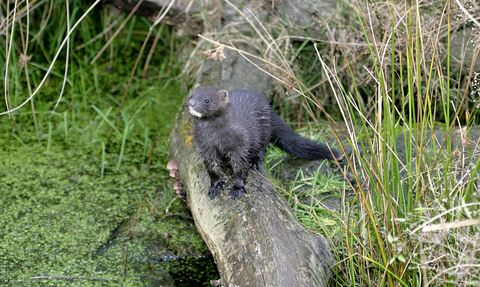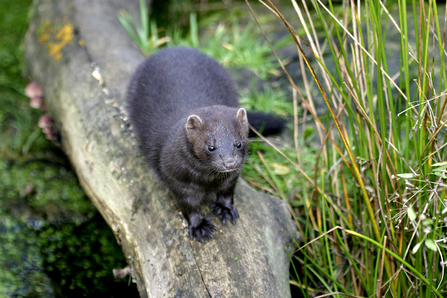
Credit: Darin Smith
Protecting Wiltshire’s water voles
A very important part of Wiltshire Wildlife Trust’s work is protecting our native wildlife and enabling nature’s recovery. We must take urgent and targeted action to halt the decline of threatened species before they are lost forever.
The European water vole is a priority species within Wiltshire, and their distinctive ‘plop’ as they slip into our waterways can still be heard along our rivers and streams. However, it is Britain's fastest declining mammal, losing 95% of its range over the last hundred years.
The decline in water vole populations has primarily been linked to two factors; habitat loss and fragmentation, and predation by American Mink.
American mink were brought to Britain in 1929, for the fur farm trade, but some escaped and were first reported to be breeding in the wild in 1956. Decades later, mink, an invasive non-native species (INNS), are now widespread throughout the UK and are commonly seen alongside rivers and canals. Many sightings are during the day, where they hunt with agility and skill, often with no fear of humans. This invasive species has been a major factor in the decline of water voles and also threatens other wetland wildlife.
What is the Trust doing to help water vole numbers recover?
Habitat restoration and creation
We are restoring our waterways and improving habitat for water voles by creating more space for them to live and forage. The Trust’s Water Team, with our volunteers, deliver multiple projects every year, such as the West Chisenbury wetland site on the Hampshire Avon, which has been restored from a deep section of slow-moving singular river to a dynamic series of channels and ponds. Find out more about this project here.
Mink control
As Mink have no natural predator in the UK, removal through management programmes at landscape scale is the only effective control mechanism. The Water Life Recovery Trust has led a management programme to remove mink from a large area; this was proven to work with no evidence of mink reproduction in the project area during the 2023 breeding season.
By following the example set by the Waterlife Recovery Trust and other Wildlife Trusts nationwide, we are working to remove American mink and allow remaining water vole populations to expand in size and range. In addition to water voles, a wealth of other native wildlife will benefit including wetland bird populations. In the absence of concerted mink management many more native creatures will disappear from Wiltshire. To protect our native wildlife we need your help.
What can you do to help?

Credit: Darin Smith
Report your mink sightings:
Waterlife Recovery Trust - https://www.waterliferecoverytrust.org.uk/report-a-sighting/
INNS Mapper - https://innsmapper.org/home

